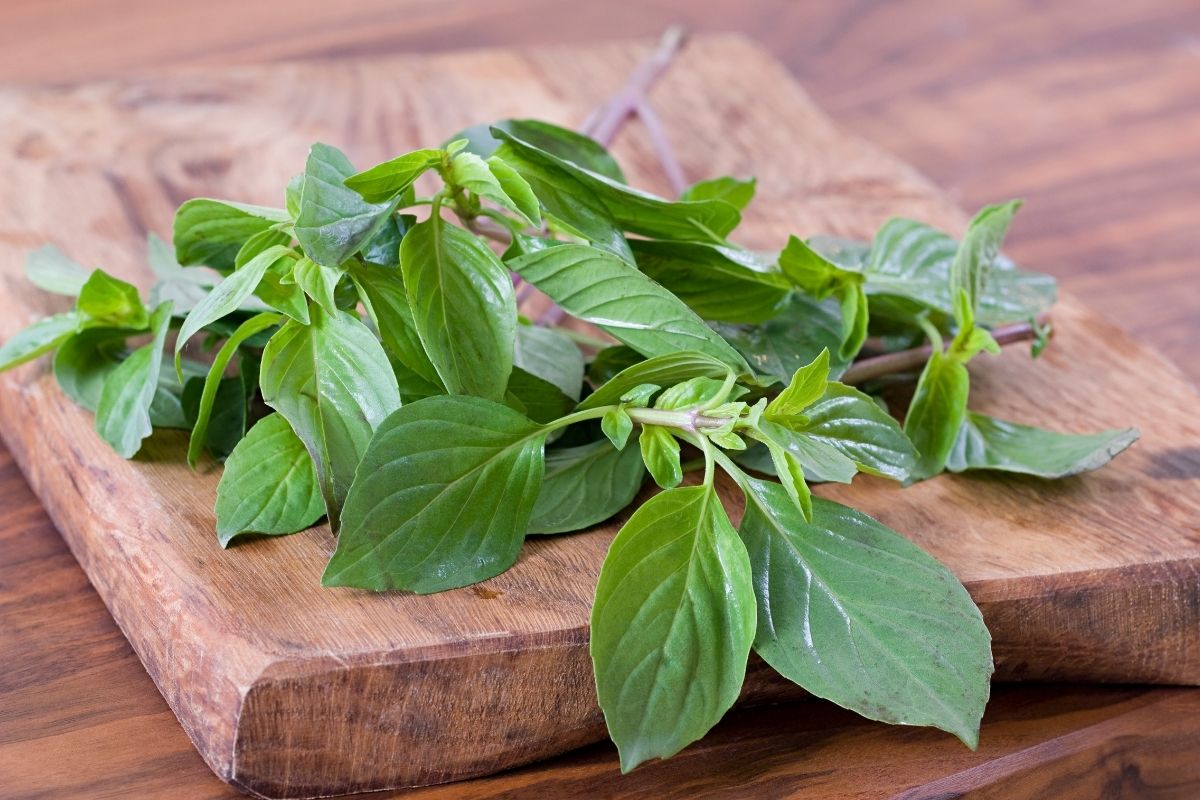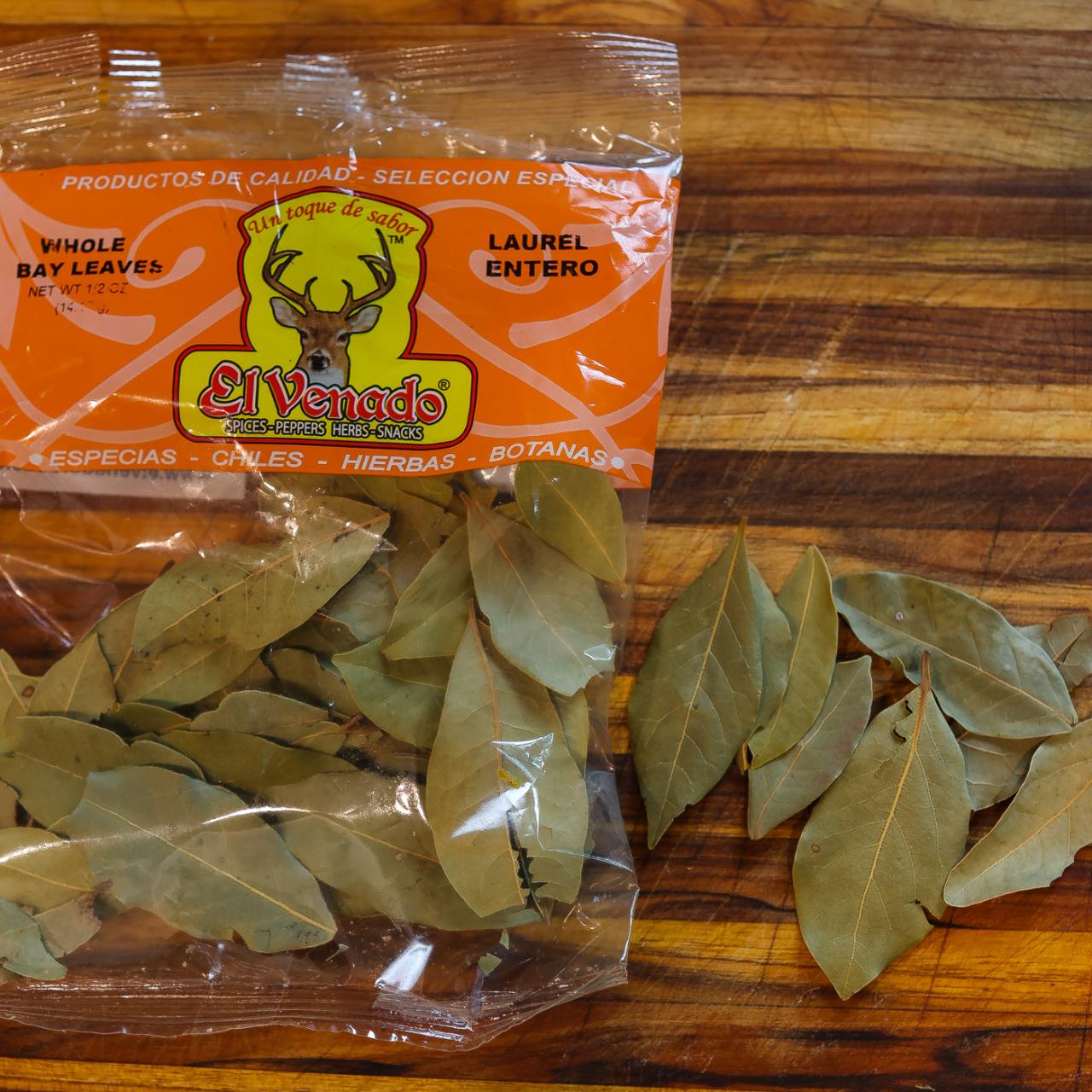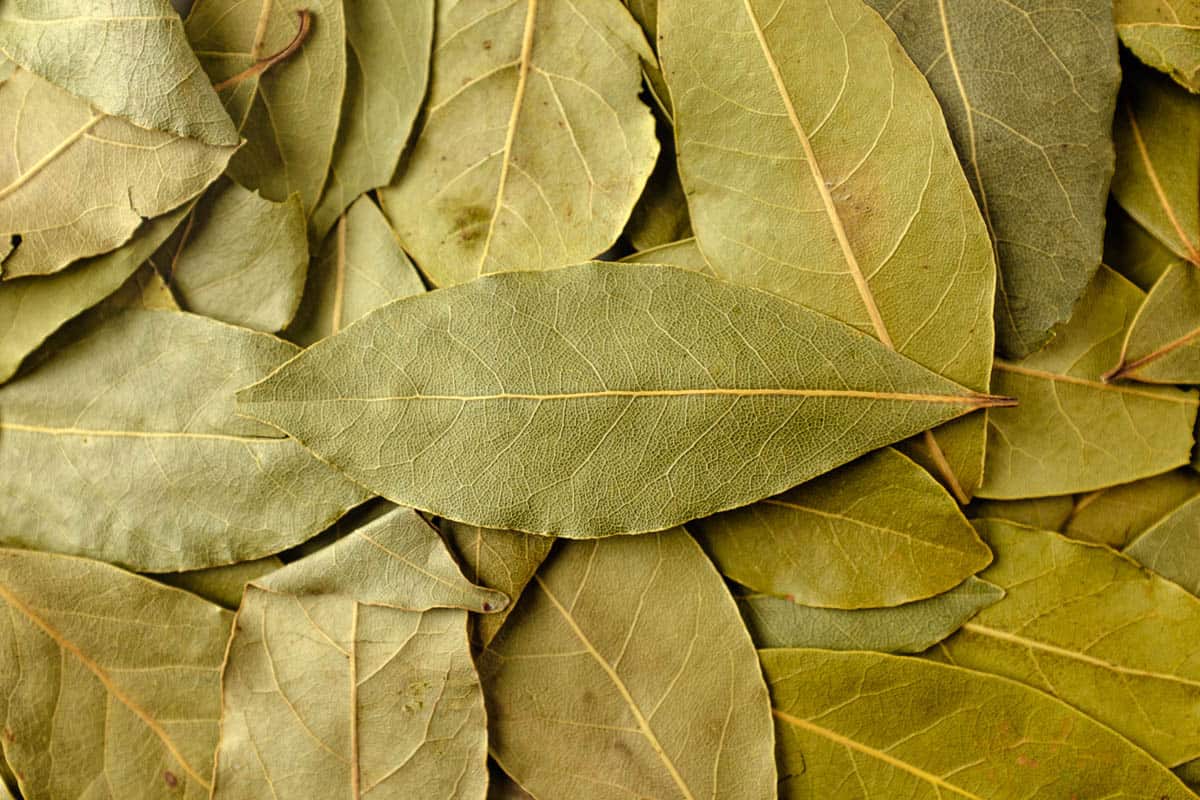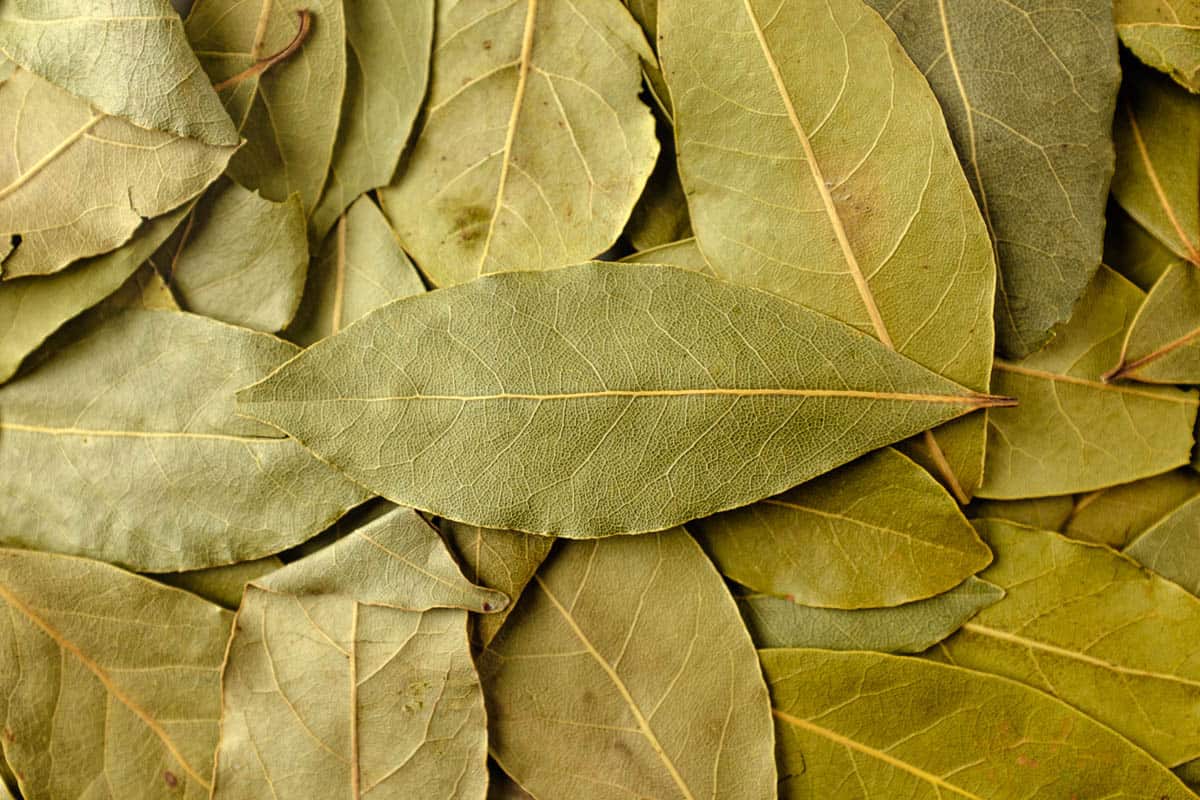The Top Alternatives to Bay Leaves for Every Recipe – Bay leaves, with their distinctive aroma and subtle bitterness, have long been a staple in kitchens worldwide. But what happens when you find yourself without this essential ingredient? Fear not, culinary adventurers! There are a wealth of flavorful substitutes waiting to be discovered, each offering a unique twist on your favorite dishes.
This comprehensive guide delves into the world of bay leaf alternatives, exploring their flavor profiles, recommended uses, and culinary benefits. Whether you’re crafting a savory stew or a sweet dessert, this resource will empower you to create delicious dishes without sacrificing the essence of bay leaf’s magic.
Understanding Bay Leaf’s Role in Cooking
Bay leaves are a staple in many cuisines, adding a distinctive aroma and flavor to various dishes. Their unique flavor profile and versatility make them a valuable addition to culinary creations.
Bay Leaf’s Flavor Profile
Bay leaves offer a complex flavor that is both earthy and slightly bitter. They possess a distinct aroma reminiscent of camphor, with subtle hints of eucalyptus and pine. Their flavor is often described as “woody,” “herbal,” and “slightly medicinal.”
While exploring culinary alternatives, it’s essential to consider the benefits of herbal infusions as well. For instance, When to Incorporate Raspberry Leaf Tea into Your Diet for Best Results provides a comprehensive guide to maximizing the advantages of this popular beverage.
Returning to our exploration of bay leaf alternatives, we can delve into the world of dried herbs and spices to discover exciting flavor profiles for your dishes.
Common Uses of Bay Leaves in Cuisines
Bay leaves are widely used in various cuisines around the world. They are a key ingredient in many classic dishes, adding depth and complexity to the overall flavor profile.
Mediterranean Cuisine
Bay leaves are a staple in Mediterranean cuisine, particularly in Greek, Italian, and Spanish cooking. They are commonly used in stews, soups, sauces, and braises, imparting a distinct herbal aroma.
French Cuisine
In French cuisine, bay leaves are essential for classic dishes like bouillabaisse, a seafood stew, and béarnaise sauce. They are also used in stocks and sauces, enhancing their depth of flavor.
Asian Cuisine
Bay leaves are used in some Asian cuisines, particularly in Vietnamese and Thai cooking. They are often added to curries, stir-fries, and noodle dishes, providing a subtle, earthy flavor.
Culinary Benefits of Using Bay Leaves
Bay leaves offer a range of culinary benefits, making them a versatile ingredient in the kitchen.
Flavor Enhancement
Bay leaves add a distinct aroma and flavor to dishes, enhancing their overall taste. Their complex flavor profile complements various ingredients, adding depth and complexity.
Flavor Infusion
Bay leaves are often used to infuse flavor into stocks, sauces, and stews. They release their aromas and flavors slowly, creating a rich and flavorful base for various dishes.
Digestive Support
Bay leaves are believed to aid digestion due to their digestive properties. They may help stimulate the production of digestive juices, promoting efficient digestion.
Top Alternatives for Savory Dishes

Bay leaves are a staple in many savory dishes, lending a warm, slightly bitter, and slightly sweet flavor. However, if you don’t have bay leaves on hand, or if you’re looking to experiment with different flavor profiles, there are several excellent alternatives to choose from.
Alternatives for Savory Dishes
Bay leaves impart a distinct aroma and flavor to dishes, but several other herbs and spices can create similar effects. Here are some of the best substitutes for bay leaves in savory recipes:
Name |
Flavor Profile |
Recommended Uses |
|---|---|---|
Thyme |
Earthy, slightly peppery, with hints of lemon |
Stews, soups, roasts, sauces, and marinades |
Rosemary |
Piney, slightly bitter, with hints of camphor |
Roasted vegetables, lamb, poultry, and bread |
Sage |
Slightly bitter, earthy, with notes of pine and citrus |
Stuffings, poultry, pasta dishes, and butter sauces |
Oregano |
Slightly bitter, earthy, with notes of mint and citrus |
Tomato sauces, pizza, and Mediterranean dishes |
Marjoram |
Slightly sweet, with notes of oregano and thyme |
Chicken, fish, and egg dishes |
Parsley |
Slightly bitter, with notes of celery and citrus |
Soups, stews, and sauces |
Tarragon |
Slightly licorice-like, with notes of anise and fennel |
Chicken, fish, and egg dishes |
Allspice |
Warm, spicy, with notes of nutmeg and cinnamon |
Stews, soups, and roasts |
Black Peppercorns |
Sharp, pungent, with a slightly bitter aftertaste |
Stews, soups, and sauces |
Cloves |
Warm, spicy, with notes of cinnamon and nutmeg |
Stews, soups, and roasts |
Alternatives for Sweet Dishes: The Top Alternatives To Bay Leaves For Every Recipe
While bay leaves are typically associated with savory dishes, they can also find a place in certain sweet recipes. Their subtle, earthy aroma can add a unique complexity to desserts. However, their strong flavor can easily overpower delicate sweetness. Therefore, it’s essential to consider alternatives that complement the sweetness of the dish without overwhelming the overall flavor profile.
Alternatives for Sweet Dishes
Several substitutes can be used in place of bay leaves in sweet recipes, each offering a distinct flavor profile. Here are some popular options:
- Cinnamon Sticks:A classic choice for sweet dishes, cinnamon sticks offer a warm, spicy, and slightly sweet flavor that pairs well with various desserts. Their aroma is particularly prominent in baked goods like cakes and cookies.
- Star Anise:This star-shaped spice boasts a licorice-like flavor with hints of anise and camphor. It adds a complex and slightly sweet aroma to desserts, particularly those with citrus notes.
- Cardamom Pods:Cardamom offers a warm, sweet, and slightly floral flavor that complements the sweetness of desserts. It is often used in Indian and Middle Eastern sweet dishes, lending a distinct aroma to cakes, cookies, and custards.
- Vanilla Beans:Vanilla beans are renowned for their rich, sweet, and complex flavor. They are a versatile ingredient that can be used in a wide range of desserts, from cakes and ice cream to custards and puddings.
Using Star Anise in a Sweet Dish
Star anise is a versatile spice that can be used in a variety of sweet dishes. Its unique flavor profile adds a complex and slightly sweet aroma to desserts, particularly those with citrus notes. Here is a recipe for a simple citrus cake that showcases the use of star anise:
Citrus Cake with Star Anise
Ingredients:* 2 cups all-purpose flour
- 1 teaspoon baking powder
- 1/2 teaspoon baking soda
- 1/4 teaspoon salt
- 1 cup granulated sugar
- 1/2 cup unsalted butter, softened
- 2 large eggs
- 1/2 cup milk
- 1/4 cup orange juice
- 1 tablespoon orange zest
- 1 star anise
- 1/4 cup powdered sugar, for dusting
Instructions:
- Preheat oven to 350°F (175°C). Grease and flour a 9-inch round cake pan.
- In a medium bowl, whisk together flour, baking powder, baking soda, and salt.
- In a large bowl, cream together butter and sugar until light and fluffy. Beat in eggs one at a time, then stir in milk, orange juice, and orange zest.
- Gradually add the dry ingredients to the wet ingredients, mixing until just combined.
- Add the star anise to the batter.
- Pour batter into the prepared cake pan and bake for 30-35 minutes, or until a toothpick inserted into the center comes out clean.
- Let the cake cool in the pan for 10 minutes before inverting it onto a wire rack to cool completely.
- Dust the cake with powdered sugar before serving.
This recipe highlights how star anise can add a unique and complex flavor to sweet dishes. The licorice-like notes of the star anise complement the citrus flavors of the cake, creating a delightful and balanced dessert.
Choosing the Right Substitute

While bay leaves are a staple in many cuisines, finding the perfect substitute requires careful consideration. The key is to choose an alternative that complements the dish’s flavor profile while delivering the desired outcome.
Factors to Consider When Selecting a Bay Leaf Substitute
Several factors influence the choice of a bay leaf substitute.
- Recipe’s Flavor Profile:The type of dish dictates the ideal substitute. For instance, a hearty stew may benefit from the earthy notes of thyme, while a delicate sauce might require the subtle fragrance of rosemary.
- Desired Outcome:The intended effect of the bay leaf in the recipe is crucial. Are you aiming for a strong, savory flavor, or a subtle, aromatic touch? The chosen substitute should align with this goal.
- Availability:Some substitutes might be readily available, while others may require sourcing. Consider the practicality of obtaining the chosen alternative.
- Personal Preference:Ultimately, personal preference plays a significant role. Experiment with different substitutes to find what best suits your taste.
Guidance on Choosing the Best Substitute Based on the Recipe’s Flavor Profile and Desired Outcome
Choosing the right substitute depends on the specific dish and the desired flavor profile.
- For Savory Dishes:Thyme, rosemary, oregano, and sage are excellent alternatives for their earthy, aromatic qualities.
- For Sweet Dishes:Cardamom, cinnamon, and star anise can add a touch of warmth and complexity to desserts.
Potential Drawbacks of Using Certain Alternatives
While many substitutes effectively replace bay leaves, some have potential drawbacks.
- Overpowering Flavors:Some alternatives, like thyme or rosemary, can be overpowering if used excessively. Start with a small amount and adjust based on taste.
- Allergic Reactions:Certain herbs and spices can trigger allergic reactions in some individuals. Be mindful of potential allergies when substituting bay leaves.
Tips for Using Substitutes
Bay leaf substitutes offer a range of flavors and aromas, and understanding their nuances is key to successful recipe adaptation. This section will guide you on incorporating these alternatives, adjusting cooking times, and ensuring proper storage and handling for optimal results.
Adjusting Cooking Times and Methods, The Top Alternatives to Bay Leaves for Every Recipe
The cooking time for bay leaf substitutes may vary depending on their type and the recipe. Some alternatives, like thyme or rosemary, release their flavor more quickly than bay leaves, while others, like dried oregano or marjoram, require longer cooking times.
While searching for the perfect bay leaf substitute, you might find yourself drawn to the intricate beauty of a columbine plant. If you’re looking for a way to add visual interest to your garden, consider the vibrant blooms of the columbine, a stunning addition to any landscape.
For tips on creating a captivating columbine display, check out this helpful guide: Creating a Beautiful Columbine Plant Display: Tips and Tricks. Once you’ve achieved that stunning garden aesthetic, you can return to the kitchen and explore the world of bay leaf alternatives, adding a touch of culinary creativity to your dishes.
- For fresh herbs:Add fresh herbs toward the end of cooking, as they lose flavor quickly when exposed to heat. For example, add fresh thyme or rosemary during the last 10 minutes of simmering a sauce.
- For dried herbs:Dried herbs are more concentrated and require less time to infuse their flavor. Add dried herbs at the beginning of cooking, as they need time to release their aromas.
- For spices:Spices like cloves, allspice, or black peppercorns should be added at the beginning of cooking to allow their flavors to develop fully.
Proper Storage and Handling
Storing and handling substitutes correctly ensures their freshness and flavor.
- Fresh herbs:Store fresh herbs in a refrigerator, wrapped in damp paper towels, for up to a week. To retain their freshness, you can also freeze them in ice cube trays filled with water.
- Dried herbs:Store dried herbs in airtight containers in a cool, dark place. They have a shelf life of up to a year.
- Spices:Spices should be stored in airtight containers in a cool, dark place. They can last for several months or even years if stored properly.
Summary

From the herbaceous warmth of thyme to the citrusy zest of lemon peel, the world of bay leaf alternatives is a treasure trove of culinary possibilities. By understanding the nuances of each substitute and incorporating them with creativity, you can elevate your cooking to new heights, ensuring every dish is infused with a symphony of flavors.
So, embrace the versatility of these alternatives and embark on a culinary adventure that will delight your taste buds and expand your cooking repertoire.
FAQs
Are bay leaf alternatives always a perfect substitute?
While substitutes can provide similar flavor profiles, they may not replicate the exact taste of bay leaves. Experimentation is key to finding the best alternative for your specific dish.
Can I use a combination of substitutes?
Absolutely! Combining different herbs and spices can create unique and complex flavor profiles, enhancing the overall taste of your dish.
How long should I cook bay leaf substitutes?
Cooking times may vary depending on the substitute used. Refer to the recipe or use your judgment based on the texture and aroma of the alternative.
